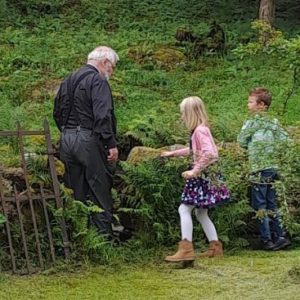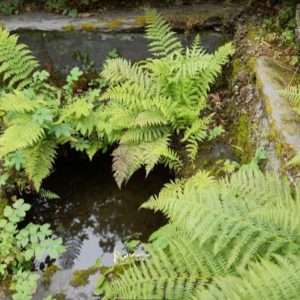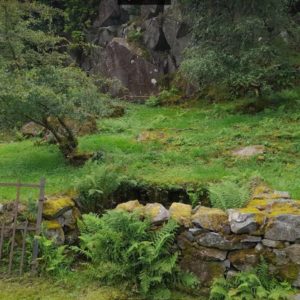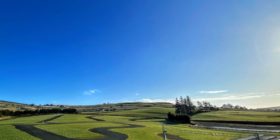Revived ancient custom of placing two fish in Gwynedd healing well
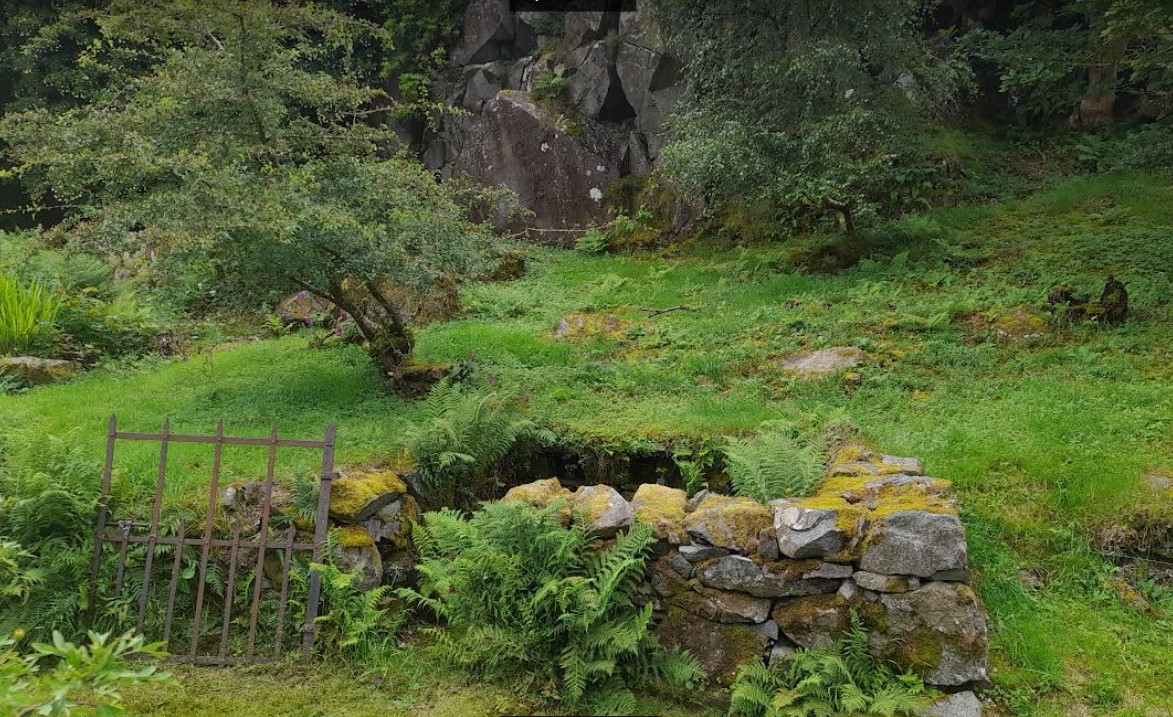
An ancient custom to place two fish in a sixth century “healing” well in Gwynedd has been revived.
For centuries, the crystal clear mountain water of the well of Saint Peris at Nant Peris has drawn people seeking miraculous cures for their ailments.
And for generations a story was handed down in the local area that two fish should be placed in the water.
The well is located by a rocky crag, surrounded by lush oak and larch trees, in the garden of a private home, which partly dates back to the medieval period, called Tyn y Ffynnon.
The tale went that if the fish showed themselves when the participant took some of the water to drink or whilst bathing in the well – a cure was guaranteed.
However, if the fish remained hidden – then the waters would have no effect.
To keep the custom alive the current residents at Tyn y Ffynnon, the Reverend Allan Wilcox and Professor Emerita Helen Wilcox, recently had two trout caught in a local stream placed into the well.
Rev Wilcox, who has been ministering at St Peris’s church, along with other churches in the area for the past few years, said: “We had been meaning to put two fish into the well ever since we came here, 18 years ago and now as we are leaving soon we thought we must do it before we go.
“We had a fisherman bring two trout, caught locally, and had them put into the well.
“We recently held a family service, and some of the children attempted to lure the fish into sight with some fish food, but sadly without success.
“But the fish had only been in there a few days – so they were probably shy, hiding under the rocks and weeds.
“We are not saying that we believe in the miraculous qualities as such, but it is a well that has been seen as a sacred place in itself since long before Christianity came here.
“Since the two fish are part of a long local tradition – we just wanted keep that tradition going and the local story alive.
“We never saw the previous fish that were put in long before we came – apparently there was only one for a long time – although there was a certain rumour that the last one had been caught and eaten by one of the boys in the village.”
Reverend Wilcox has done some research into the history of the well, and cites the work of Rev Sabine Baring-Gould who documents details about about the well in his Lives of the British Saints.
“Ffynnon Beris, his Holy Well at Llanberis [the old name for the Nant Peris area] is a little distance from the church, in front of a cottage under a rock called Tynyffynnon, in which formerly its priestess lived,” Rev Sabine Baring-Gould writes.
“The waters of the well were supposed to cure rickety children and scrofulous and rheumatic persons, who were to bathe in it.
“Two ‘sacred fish’ have always been kept in the well, and they were believed to be the successors of a long series of others which have inhabited it in an unbroken line from the days of St. Peris.
“Two new trout were put in in 1896. These fish, like the eel of some other Holy Wells in Wales, are the Welsh counterpart to the Irish Salmon of Knowledge.”
Reverend Wilcox said: “Rev Sabine-Bearing Gould’s account of the replacement of the fish evidently draws heavily on a similar, much earlier report that appeared in the Liverpool Mercury, on November, 18, 1896.”
That article reads: “Invalids in large numbers came during the eighteenth and the first half of the nineteenth century to bathe in the well and drink of its waters; and the oak box (Cyff Peris), into which the visitors dropped their offerings, is still in its place in the church.
“The tradition is that if one of the fish came out of its hiding place when an invalid took some of the water for drinking or for bathing purposes cure was certain; but if the fish remained in their den, the water would do those who took it no good.
“Persons often enticed them out by throwing in something for them to eat.
“Two fish only are to be put in the well at a time, and they generally live in it for about half a century.
“If one dies before the other, it would be of no use to put in a new fish, for the old one would not associate with it, and [it] would die.
“The experiment has been tried. The last of the two fish put in the well
about fifty years previously died in August, 1896. It had been blind for some time.
“It measured 17 inches, and was buried in the garden adjoining the well.”
The Nant Peris well also features in Britain’s Holiest Places, by Nick Mayhew Smith.
He notes that the well was previously regarded as “a lucrative source of income, helping to pay a parish clerk’s salary in the 18th century”.
He added: “Today the waters are simply valued for the blessing of an early Celtic saint.
“Like many holy wells in Wales it has been used as a place of Baptism in recent times.”
Nowadays, water from the well is still used for Baptisms, held at the nearby St Peris church.
By Dale Spridgeon – Local Democracy Reporter
Spotted something? Got a story? Send a Facebook Message | A direct message on Twitter | Email news@north.wales

